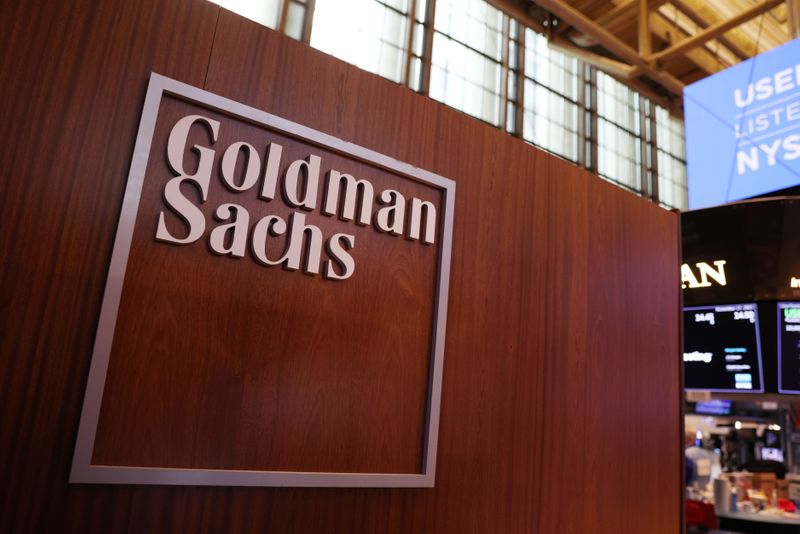Oklo stock tumbles as Financial Times scrutinizes valuation
Introduction & Market Context
Goldman Sachs (NYSE:GS) reported strong third-quarter 2025 results on October 14, with earnings per share of $12.25 exceeding analyst expectations of $11.02. Despite the robust performance, the investment banking giant’s stock fell 2.39% in pre-market trading to $768, down from the previous close of $786.78, suggesting investors may have been looking for even stronger results or were concerned about forward guidance.
The company delivered its third-highest quarterly net revenues in history at $15.18 billion, demonstrating significant growth across all business segments compared to the same period last year. This performance comes amid a strengthening M&A environment and continued momentum in wealth management.
Quarterly Performance Highlights
Goldman Sachs reported net earnings of $4.10 billion for Q3 2025, translating to a return on equity (ROE) of 14.2% and return on tangible equity (ROTE) of 15.2%. Year-to-date, the firm has generated $44.83 billion in net revenues and $12.56 billion in net earnings, with book value per share reaching $353.79, representing 5.1% growth year-to-date.
The firm’s presentation highlighted several key achievements, including maintaining its #1 position in announced and completed M&A transactions and ranking #2 in high-yield debt and leveraged loan offerings. Goldman also completed the sale of the General Motors credit card program during the quarter, a strategic move to refocus its consumer lending operations.
As shown in the following financial overview:

The company’s three main business segments all showed strong performance. Global Banking & Markets led with $10.12 billion in net revenues, followed by Asset & Wealth Management with $4.40 billion, and Platform Solutions with $670 million. Operating expenses increased year-over-year to $9.45 billion, primarily reflecting higher compensation and benefits, transaction-based expenses, charitable contributions, and net provisions for litigation and regulatory proceedings.
Detailed Financial Analysis
Global Banking & Markets
The Global Banking & Markets division showed significant strength, with investment banking fees of $2.66 billion reflecting higher revenues across Advisory, Debt underwriting, and Equity underwriting. Fixed Income, Currency and Commodities (FICC) generated $3.47 billion, while Equities contributed $3.74 billion, benefiting particularly from record financing revenues.
The following breakdown illustrates the division’s performance:

A more detailed look at the division’s revenue streams shows Advisory services generated $1.40 billion, Equity underwriting $465 million, and Debt underwriting $788 million. FICC intermediation contributed $2.44 billion while FICC financing added $1.04 billion. In Equities, intermediation brought in $2.02 billion while financing reached a record $1.72 billion.

Asset & Wealth Management
The Asset & Wealth Management division achieved record Assets Under Supervision (AUS) of $3.45 trillion, marking the 31st consecutive quarter of long-term fee-based net inflows. Management and other fees reached record levels at $2.95 billion, primarily reflecting the impact of higher average AUS. Private banking and lending net revenues also hit record levels at $1.06 billion.
The division’s financial performance is illustrated below:

Assets Under Supervision increased by $159 billion during the quarter, with net inflows of $79 billion across all asset classes and net market appreciation of $80 billion. The AUS growth breakdown shows:

Alternative investments within Asset & Wealth Management also showed strong growth, with management and other fees from alternative investments reaching $597 million, up 13% compared to Q3 2024. During the quarter, alternative investments AUS increased by $19 billion to $374 billion, with third-party alternatives fundraising of $33 billion.
Platform Solutions and Loan Portfolio
The Platform Solutions segment reported net revenues of $670 million, higher year-over-year primarily due to the absence of losses related to the GM credit card program that was transferred to held for sale in the prior year period.
Goldman’s loan portfolio expanded quarter-over-quarter, with net interest income for Q3 2025 reaching $3.85 billion, 64% higher than the same period last year. The firm maintained an allowance for loan and lease losses (ALLL) to total gross loans at amortized cost of 2.1%, with ALLL to gross consumer loans at 12.4%.

Capital Position and Shareholder Returns
Goldman Sachs returned $3.25 billion of capital to common shareholders during the quarter, demonstrating its commitment to shareholder value. However, both Standardized and Advanced CET1 capital ratios decreased quarter-over-quarter, reflecting the firm’s continued business expansion and capital deployment.

Strategic Initiatives & Forward-Looking Statements
According to CEO David Solomon, the firm remains focused on its client-centric approach and strategic priorities. The record AUS of $3.45 trillion underscores the success of Goldman’s wealth management strategy, while the strong performance in investment banking highlights its continued market leadership.
The investment banking fees backlog remained essentially unchanged quarter-over-quarter, suggesting stable near-term pipeline for deal activity. The company’s continued investment in alternative assets, with $374 billion in AUS, positions it well for future growth in this high-margin business.
Based on the earnings call transcript, Goldman Sachs is optimistic about a stronger M&A environment in 2026 and expects approximately $100 billion in alternatives fundraising. The company has also launched "One Goldman Sachs 3.0," an AI-driven operational model aimed at enhancing efficiency and client service.
Despite the strong quarterly results, investors appear cautious, possibly due to broader market conditions and the stock’s impressive 57.73% return over the past six months. With the stock trading at a P/E ratio of 16.85 and a PEG ratio of 0.37, Goldman Sachs continues to present an interesting value proposition for investors looking for exposure to the financial services sector.
Full presentation:
This article was generated with the support of AI and reviewed by an editor. For more information see our T&C.
